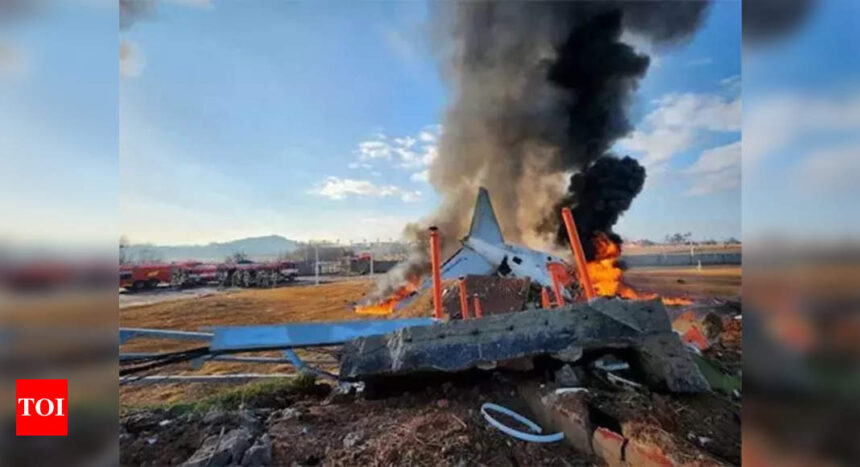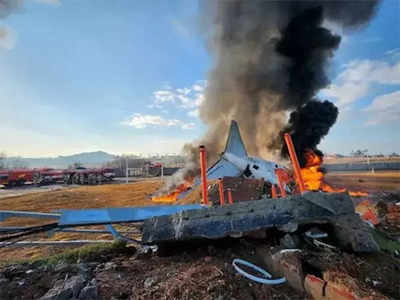[ad_1]
Two flight attendants aboard the ill-fated Jeju Air Flight 2216 were the only survivors in a crash that claimed the lives of 179 passengers and crew. Their remarkable survival can be attributed to one factor: the rear seats, which are statistically the safest part of an aircraft in the event of a crash.
The Boeing 737, which was approaching Muan International Airport on Sunday, skidded off the runway and slammed into a concrete wall. The tail section of the plane, where the two flight attendants were seated, was the only part that remained intact, officials said, reported the New York Post.
“Only the tail part retains a little bit of shape, and the rest of the plane looks almost impossible to recognize,” Muan Fire Chief Lee Jung-hyun remarked at a briefing.
The rear seats, long regarded as safer in crashes, have been the subject of a 2015 Time magazine analysis of 35 years of Federal Aviation Administration (FAA) data. The study revealed that seats located in the back third of an aircraft had a 32% fatality rate, compared to 39% in the middle and 38% in the front sections.
One of the survivors, identified as Lee Mo, recalled the moments before the crash. He had just buckled his seatbelt when the plane hit the ground. The next thing he remembered was waking up in a hospital bed, bewildered. “Where am I?… What happened?” he recalled asking, according to the Korea Times.
Flight attendants often sit at the rear due to their duties during flight, making it more likely that they were in the safest section. However, survival in crashes can depend on other factors, including proximity to an exit row, as Professor Doug Drury from Australia’s Central Queensland University explains. Though exit rows can offer a quicker escape, sitting near the wings—where fuel is stored—can increase the risk of fire or explosion.
In addition, Drury suggests that middle seats, with a person on either side, may offer an added buffer, reducing the risk of injury.
Despite this remarkable survival story, flying remains an extremely safe mode of transportation. The International Air Transport Association reported zero fatalities due to commercial aviation accidents in 2023. On average, there is only one accident for every 880,293 flights, making air travel statistically safer than buses or trains.
As investigators look into the cause of the Jeju Air crash, new details are emerging about the flight’s final moments. The pilot, with nearly 7,000 flight hours, reported a bird strike that struck at least one engine minutes before the crash. This may have triggered an engine failure and disabled the aircraft’s hydraulic systems, which control the landing gear and brakes. However, manual overrides exist for such systems, raising further questions.
Aviation safety expert David Learmount weighed in on the tragedy, highlighting the concrete wall that the plane crashed into. “It should never have been at the end of the runway,” he told Sky News. “It was verging on criminal to have it in place.”
As investigators continue their work, the survival of the two flight attendants serves as a reminder of the role that seat placement, along with luck, can play in a crash—and how incredibly rare aviation accidents are in the broader context of air travel.
[ad_2]
Source link








